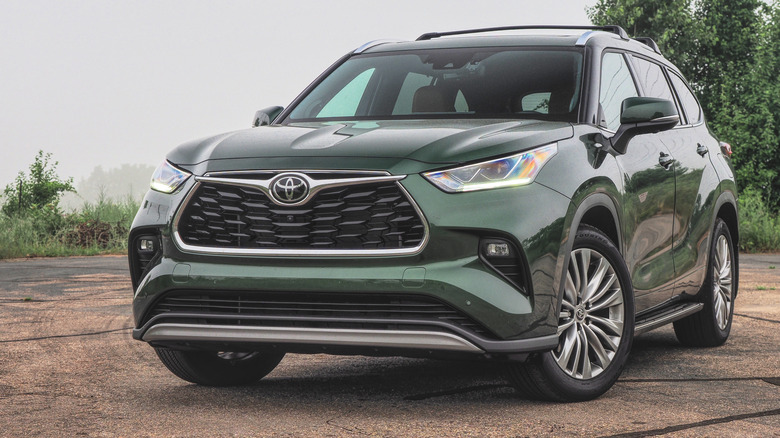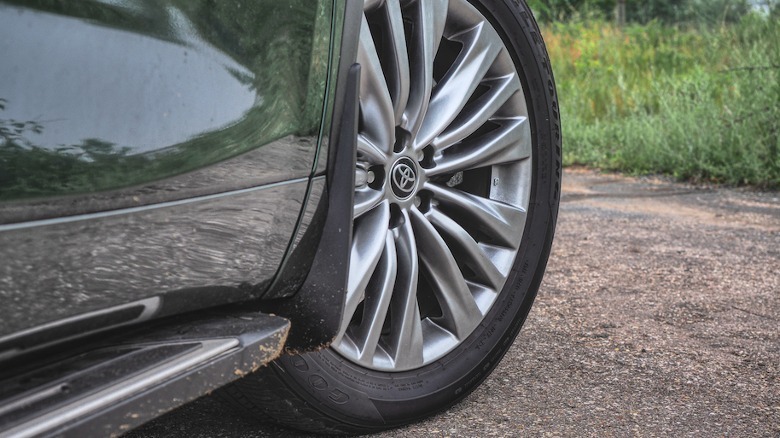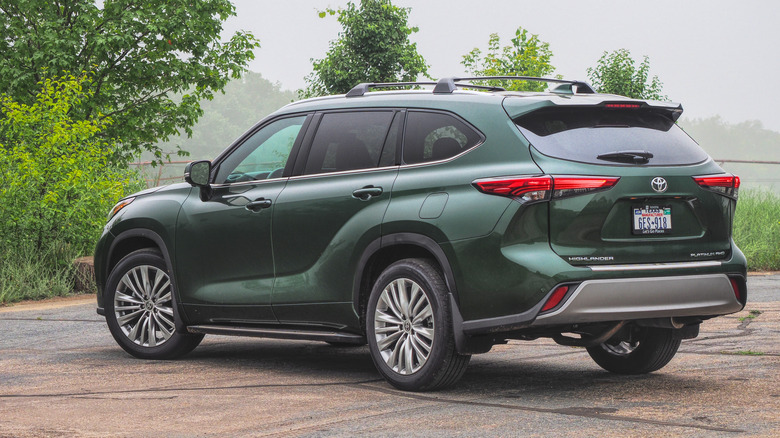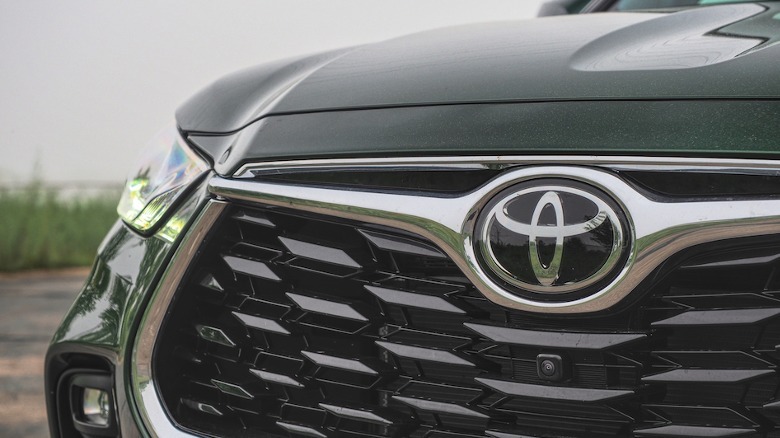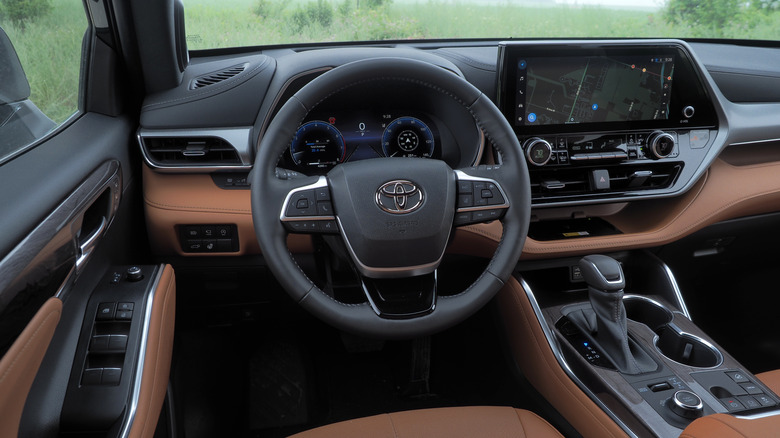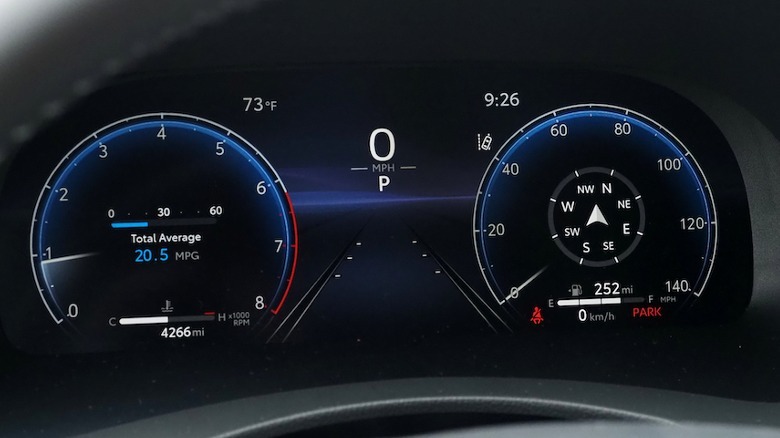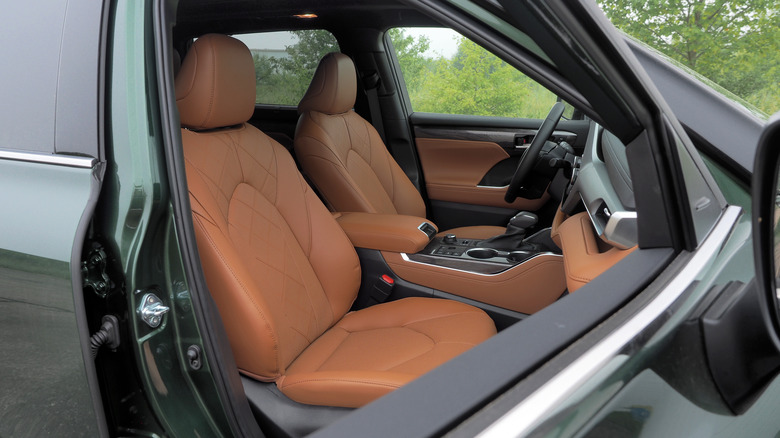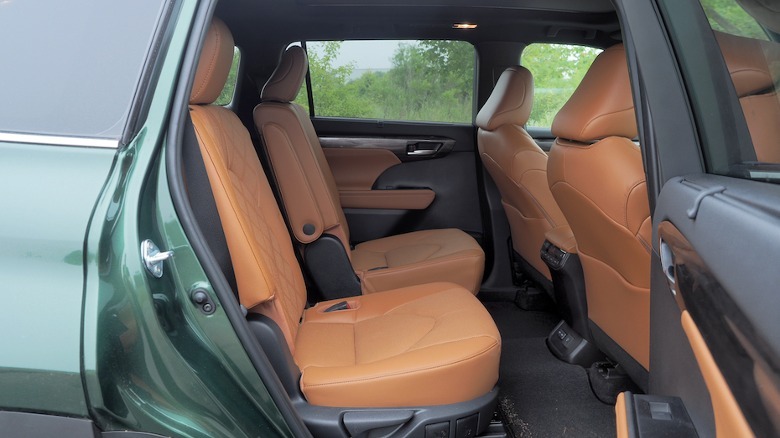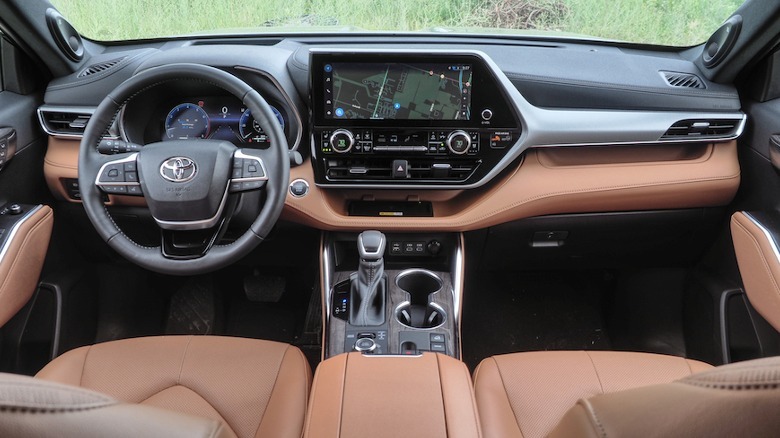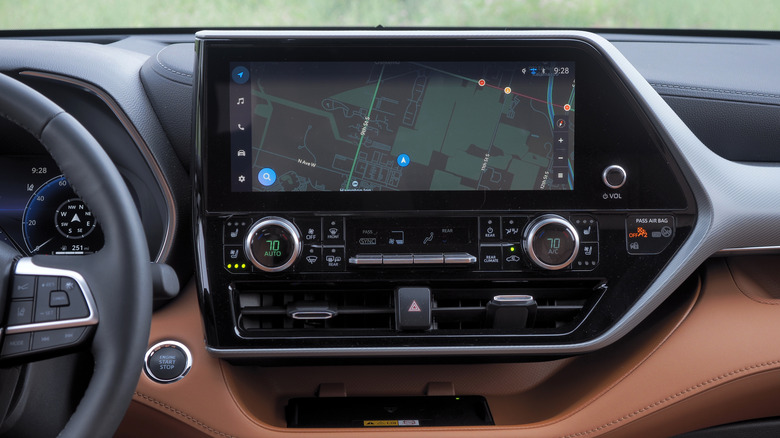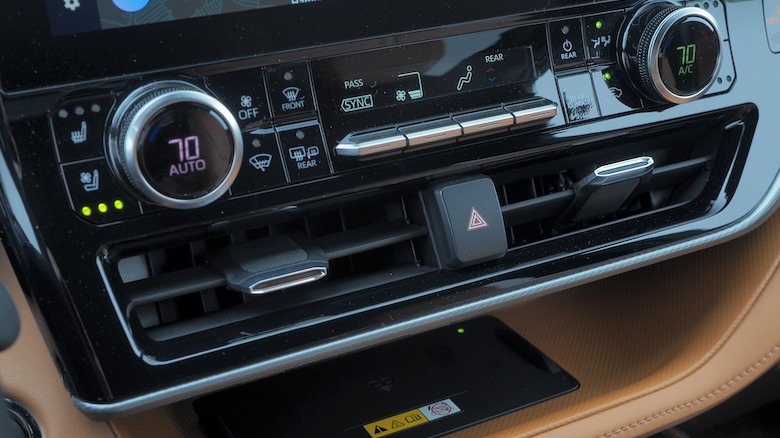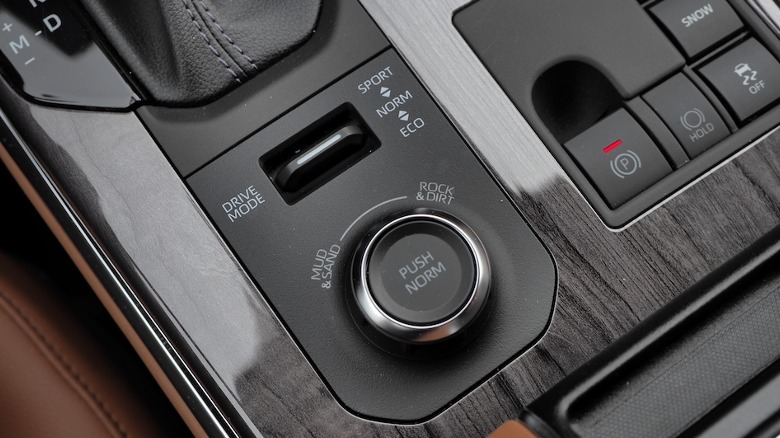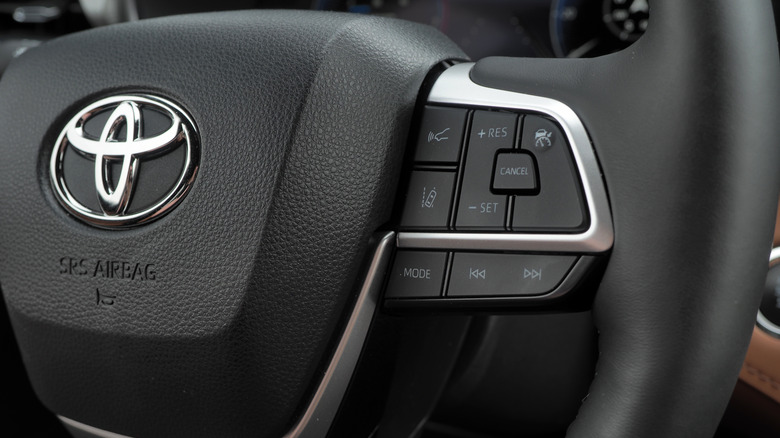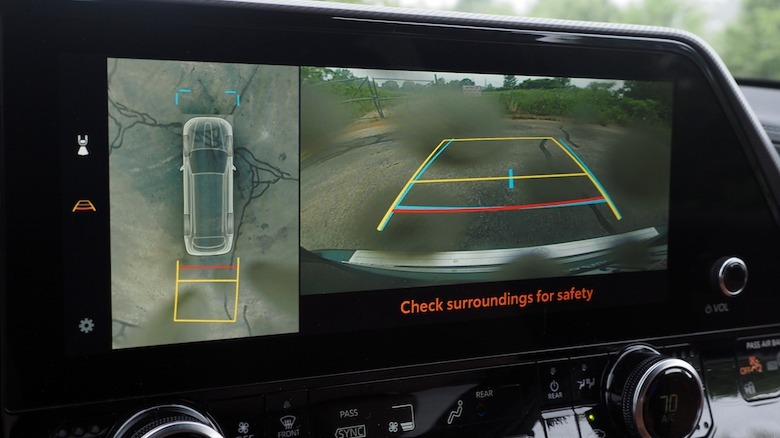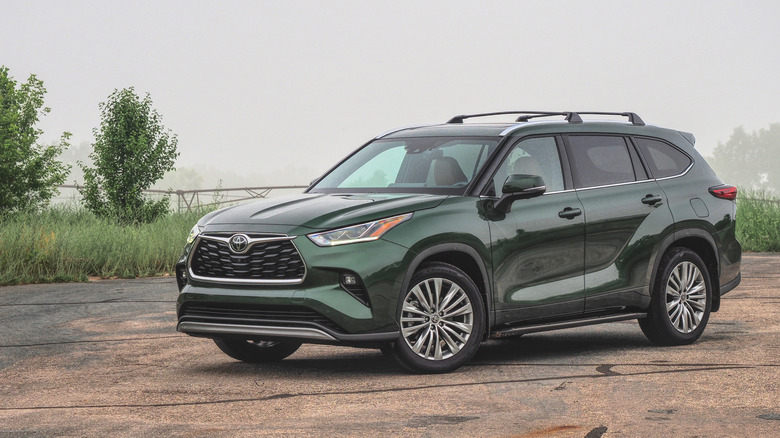2023 Toyota Highlander Review: There's One Option You Absolutely Need
- Comfortable and spacious
- High level of standard safety equipment
- Edging on Lexus-luxury in higher trims
- Non-hybrid engine neither swift nor particularly frugal
- Some ergonomics issues in the cabin
Once upon a time, it was the humble minivan that families turned to for road trips and school drop-offs. These days, the three-row SUV has become the go-to, offering seating for up to eight in designs that at least hint at venturing beyond the asphalt. No surprise, then, that the Toyota Highlander is a sales heavyweight in the U.S.
Part of that charm is probably down to the Highlander's inoffensive nature. Yes, its most recent restyle left it with angry headlamps and an "I just smelled something bad" grille, but it's positively classical compared to angular alternatives like the Hyundai Palisade or Kia Telluride. Throw in the reassurance of that Toyota badge and a boatload of active safety tech fitted as standard, and there's no doubt that the Highlander has the mass market in its sights.
Much as we've seen before, though, the experience in your nearest Toyota dealer could be a confusing one. There were already a hefty array of trims and drivetrains to choose between — including optional electrification — and that was before the automaker added the Grand Highlander to accommodate even burlier sons and daughters (and dogs).
Two engines but only one that's electrified
Toyota offers two engine options for the 2023 Highlander. The 2.4-liter four-cylinder turbocharged gas engine is most affordable, which packs 265 horsepower and 310 lb-ft of torque and is painted with an 8-speed automatic transmission. You can also have the Highlander as a hybrid, where a 2.5-liter four-cylinder gas engine combines with an electric motor for a total of 243 horsepower and 175 lb-ft of torque. That gets a CVT instead.
Either way, front-wheel drive and all-wheel drive options are available; you'll pay around $2,000 for it, trim-depending. Despite having less overall power, you also pay more for the hybrid. 2023 Highlander ownership starts at $36,620 (plus destination) for the gas-only L trim, which doesn't have an exact equivalent in the gas-electric SUV.
Instead, that kicks off with the 2023 Highlander Hybrid LE, from $40,620 (plus destination), a $1,600 premium over the non-hybrid LE. Of course, ownership of the electrified model is primarily motivated by gas savings.
Toyota's turbo-four decision barely pays off
Were it my money, I'd opt for those savings. Toyota's 2.4-liter turbo engine isn't bad, but it's not exactly punchy. A smooth ride should mean no complaints from passengers, but no driver will eagerly anticipate their time behind the wheel.
The turbo-four gets angsty if pushed, engine noise definitely spoiling what's otherwise a pretty quiet cabin. Flick to Sport mode and the 8-speed postpones upshifts, but general pace isn't especially elevated. Then again, with Toyota's suspension setup favoring compliance and comfort, there's not a huge amount of motivation here to do anything but amble.
More ominous is economy. Officially, the Highlander AWD will do 21 mpg in the city, 28 mpg on the highway, and 24 mpg combined. In reality, my own mixed driving saw the SUV hit 20.5 mpg. Not entirely terrible for a three-row SUV — it just bested the Hyundai Palisade AWD, which packs a V6 — but in my time with the Highlander Hybrid AWD, I saw 29 mpg with no effort (and it's rated for 35 mpg combined).
A spacious and flexible cabin
At least your time in the cabin will be comfortable. Toyota's decision to launch a Grand Highlander was primarily to offer more third-row space, but the regular version still has three rows and seating — trim dependent — for up to eight. XLE trim and above switch the middle bench for a pair of comfortable captain's chairs.
Those in the first and second rows will have the best time of it; things definitely get snug in the child-scale third row. That drops down to expand the 16 cu-ft of trunk space to 48.4 cu-ft. At most, there's a healthy 84.3 cu-ft to play with. One advantage of the non-hybrid SUV is its tow rating: 5,000 pounds, versus the Highlander Hybrid's 3,500 pounds.
It's all very practical. There are fourteen — fourteen! — cup holders spread around the cabin, Toyota apparently terrified that Highlander occupants will become dehydrated. Three-zone climate control is standard, as are five USB ports (one USB-A and four USB-C) along with two 12V outlets. Select trims get one or two 120V AC outlets, too.
A much-needed infotainment upgrade
Like other recent Toyota (and Lexus) models, the Highlander's dashboard experience is wildly improved, given the presence of the automaker's new infotainment system. Lower trims squeeze it into an 8-inch touchscreen (and have a mixture of analog dials and a digital display for the driver); more expensive trims get a far more spacious 12.3-inch display (and fully digital instrumentation, plus an optional head-up display). There's wireless Apple CarPlay and Android Auto support, as well as surprisingly capable voice control. Toyota's UI, in general, looks much better than before and is easier to navigate, too.
Despite that, there's no shortage of physical controls. The HVAC system gets dedicated buttons and knobs, while the steering wheel is positively bristling with keys. It all feels sturdy, while the swathes of soft-touch material across the swooping dashboard add a little premium sparkle. I'm less convinced by the glossy "wood" in the center console, but at least there are plenty of storage nooks and cubbies.
There are some ergonomic foibles, still. The wireless phone charger is neatly positioned on its own little shelf, just under the infotainment touchscreen, but my (caseless) iPhone slid around as I drove and thus constantly interrupted its charging. Toyota has three different ways to select drive modes: there's a toggle for switching between Normal, Sport, and Eco, a separate dial for Mud & Sand and Rock & Dirt, and finally, a button for Snow mode.
The active safety tech families expect now
Toyota's safety tech is similarly loaded, though thankfully a lot easier to use. Every 2023 Highlander comes with Toyota Safety Sense 2.5+, complete with pedestrian-detecting pre-collision avoidance, lane departure alerts with steering assistance, lane tracing assist, road sign assist, and adaptive cruise control. Blind-spot warnings with rear cross-traffic alerts are also a welcome standard feature.
Higher trims upgrade the reversing camera for a 360-degree bird's eye view, Toyota using digital cleverness to show what's underneath the Highlander rather than just around it; that's probably intended for those times you risk the Rock & Dirt mode, but it's probably more useful to spot forgotten toys strewn across the driveway or an errant garden hose. Front and rear parking sensors — with automatic emergency braking — are also offered on more expensive versions of the SUV.
LATCH support includes lower anchors and tethers on the outboard second-row seats, plus tether anchors on the middle second-row seat if fitted, and on the third-row seats.
2023 Toyota Highlander Verdict
The three-row SUV segment is a fiercely competitive one. Kia's Telluride and Hyundai's Palisade have carved out go-to status by virtue of their combination of aggressive pricing and generous equipment. Those unwilling to entirely sacrifice driving pleasure have striking options like the Mazda CX-90 to sway them.
In the face of such rivals, the 2023 Toyota Highlander feels sensible but not especially memorable. It's not that it does anything badly or even that it particularly falls short on any one measure. It's quiet, relaxed, and easy to drive; the cabin offers decent space and — in more expensive trims, at least — features and finishes that wouldn't be out of place in a Lexus.
Nonetheless, neither does Toyota's three-row do much to elevate itself, and that's a problem in this category. Personally, I'd stick to the mid-range XLE trim — from $42,020 plus destination — and add the hybrid drivetrain, at which point the payoff for dealing with a four-cylinder engine actually becomes tangible. Those looking for maximum practicality will probably want to step up to the Grand Highlander, however, assuming they can stretch their budgets along with their legs.
